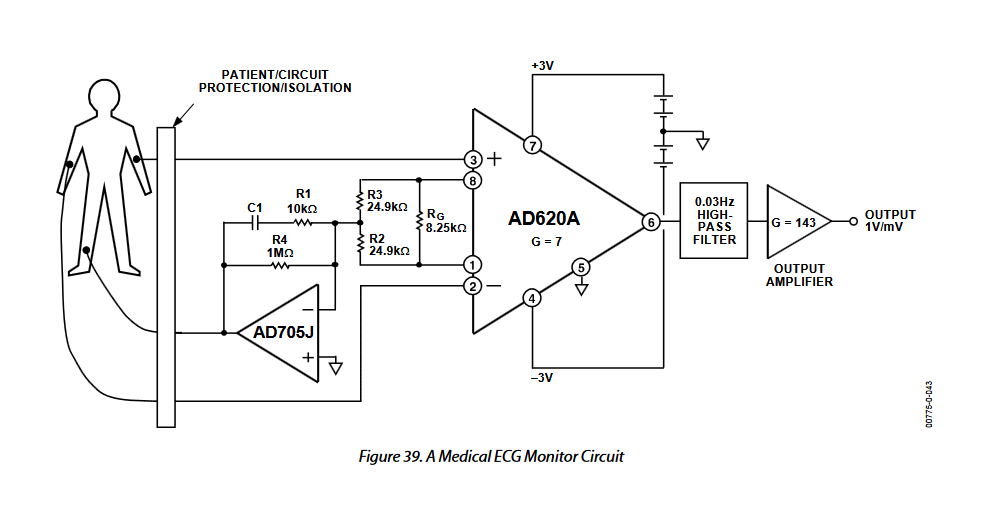Post History
It is important to realize that an ECG signal is high impedance and this easily picks up line voltage E-fields. Using a 50 Ohm sig.gen. is a poor simulation of the use of this circuit and also neg...
#1: Initial revision
It is important to realize that an ECG signal is high impedance and this easily picks up line voltage E-fields. Using a 50 Ohm sig.gen. is a poor simulation of the use of this circuit and also negates any common mode rejection using it as a single-ended amplifier with one input grounded. Ground by definition means zero volts as a reference, but adding a wire which acts as an inductive antenna to the ground means you will not have 0.000 mV anymore. Thus the advice to simulate electrode resistance with 100k is rational. To achieve the best CMRR all paths must be balancing such as the two Rgs' the wires or else shielding them or back-driving the common-mode voltage from the middle of the two Rg's becomes your null point which when buffered and attached to the body suppresses the common mode stray line noise with negative feedback. The R2 is optional in this case but is useful when it is not connected to the sig.gen. 


















